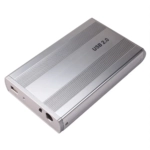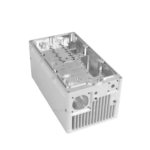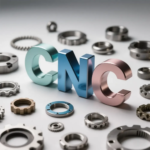The difficulties in processing stainless steel materials mainly include the following aspects:
1. High cutting force and high cutting temperature
This type of material has high strength, large tangential stress and large plastic deformation when cutting, so the cutting force is large. In addition, the thermal conductivity of the material is extremely poor, causing the cutting temperature to increase, and the high temperature is often concentrated in the narrow area near the tool cutting edge, thereby accelerating the wear of the tool. tool.
2. severe work hardening
Austenitic stainless steel and some high-temperature alloy stainless steels have an austenitic structure and have a strong tendency to work harden during cutting, generally several times that of ordinary carbon steel. The tool cuts in the work hardened area, thus shortening the tool life.
3. Easy to stick to the knife
Austenitic stainless steel and martensitic stainless steel have the characteristics of strong chip strength and high cutting temperature during processing. When strong chips pass through the rake face, adhesion, welding and other bonding phenomena occur, affecting the surface roughness of the machined parts.
4. Accelerated tool wear
The materials mentioned above generally contain high melting point elements, have high plasticity, and have high cutting temperatures, which accelerate tool wear and require frequent sharpening and replacement of tools, thereby affecting the production efficiency and increasing tool usage costs.
The main objective is to reduce the speed and feed of the cutting line. Use tools specially designed for processing stainless steel or alloys at high temperatures, and it is best to use internal cooling for drilling and tapping.
Stainless steel parts processing technology
Through the above analysis of processing difficulties, the processing technology and related tool parameter design of stainless steel are expected to be very different from those of ordinary structural steel materials. The specific processing technology is as follows:
1. Drilling
During the drilling process, due to the poor thermal conductivity and low elastic modulus of stainless steel materials, it is also difficult to process holes. To solve the problem of hole processing in such materials, it is mainly to select the appropriate tool materials, determine the reasonable geometric parameters of the tool and the cutting amount of the tool. When drilling the above materials, drill bits generally need to use drill bits made of W6Mo5Cr4V2Al, W2Mo9Cr4Co8 and other materials. The disadvantages of drill bits made from these materials are that they are relatively expensive and difficult to purchase. When drilling with the commonly used W18Cr4V ordinary standard high-speed steel drill bit, there are defects such as small crown angle, the chips are too wide to be discharged from the hole in time, and the cutting fluid cannot cool the drill bit. . Over time, the stainless steel material has poor thermal conductivity, causing the cutting temperature to concentrate on the cutting edge, which can easily cause burns and chips on both flank surfaces and the main edge. , thus reducing the life of the cutting edge. forest.
1) Design of tool geometric parameters When drilling with ordinary W18Cr4V high-speed steel drill bit, the cutting force and cutting temperature are concentrated on the tip of the drill bit to improve the durability of the cutting part of the drill bit , the vertex angle can. be increased appropriately. The vertex angle is generally selected between 135° and 140°. Increasing the top angle will also reduce the outer edge cutting angle and shrink the drilling chips for easier chip removal. However, after increasing the apex angle, the chisel edge of the drill bit becomes wider, resulting in increased cutting resistance. Therefore, the chisel edge of the drill bit must be ground. After grinding, the bevel angle of the chisel edge is 47°. at 55°, and the cutting angle of the chisel edge is 3°~5° When grinding the chisel edge, the corner between the cutting edge and the cylindrical surface should be rounded to increase the strength of the chisel edge . Since the elastic modulus of stainless steel materials is low, the elastic recovery of the metal under the chip layer is large, and the work hardening is large during processing. If the clearance angle is too small, wear of the drill flank surface will occur. will be accelerated, the cutting temperature will be increased, and the life of the drill bit will be reduced. Therefore, the draft angle should be increased appropriately. However, if the clearance angle is too large, the leading edge of the drill bit will become thin and the rigidity of the leading edge will be reduced. Therefore, the draft angle should be 12° to. 15°. In order to shrink the chips and facilitate their evacuation, it is also necessary to open offset chip grooves on both side surfaces of the bit.
2) When selecting the cutting quantity for drilling, the selection of the cutting quantity should start from the fundamental point of reducing the cutting temperature, because high-speed cutting will increase the cutting temperature and a temperature high cutting speed will aggravate tool wear, so the amount of cutting The most important thing is to select the cutting speed. Generally, the cutting speed is 12-15m/min. Feed rate has little effect on tool life, but if the feed rate is too low, the tool will cut into the hardened layer, worsening wear; if the feed speed is too large, the surface roughness will deteriorate; Based on the above two factors, the feed quantity should be chosen between 0.32 and 0.50 mm/r.
3) When choosing the cutting fluid for drilling, in order to reduce the cutting temperature, emulsion can be used as the cooling fluid.
2. Boring processing
1) Design of tool geometric parameters Most of the reaming processing of stainless steel materials uses carbide reamers. The structure and geometric parameters of the reamer are different from ordinary reamers. In order to improve the strength of the cutter teeth and avoid chip clogging during reaming, the number of reamer teeth is generally relatively small. The cutting angle of the reamer is generally 8° to 12°, but in some special cases, in order to achieve high speed reaming, a cutting angle of 0° to 5° can also be used, l The draft angle is generally 8°; at 12°; the main deviation angle is The selection depends on the hole Generally, the through hole is 15°~30° and the closed hole is 45° In order to discharge the chips forward when reaming, the blade tilt angle. can also be increased appropriately. The tilt angle of the blade is generally 10°~20°; the width of the blade is 0.1~0.15mm; the inverted cone of the reamer should be larger than that of ordinary reamers. Carbide reamers are generally 0.25~0.5mm/100mm, and high speed steel reamers are 0.1~0.25. mm/100mm; the length of the correction part of the reamer is generally 65%-80% of that of ordinary reamers, of which the length of the cylindrical part is 40%-50% of that of ordinary reamers.
2) When selecting the cutting quantity for reaming, the feed quantity is 0.08~0.4mm/r, the cutting speed is 10~20m/min, the tolerance d The coarse bore is generally 0.2 ~ 0.3mm, and the fine bore tolerance is 0.1 ~ 0.2mm. Carbide tools should be used for coarse boring, and high speed steel tools can be used for fine boring.
3) When the cutting fluid is selected for boring stainless steel materials, total loss system oil or molybdenum disulfide can be used as the cooling fluid.
3. Boring Processing
1) Tool material selection Due to the high cutting force and high cutting temperature when processing stainless steel parts, the tool material should try to choose YW or YG carbide with high strength and good thermal conductivity. YT14 and YT15 carbide inserts can also be used for finishing. When batch processing parts made of the above materials, tools made of ceramic materials can be used. Since this type of material is mainly characterized by high toughness and severe work hardening, the chips produced when cutting these materials are generated as unit chips. which will cause the tool to vibrate and easily cause microscopic vibrations on the blade. Therefore, when choosing ceramic tools for cutting parts made of such materials, the first thing to consider is microscopic toughness. At present, Sialon is a better choice, especially α/βSialon material, which attracts attention because of its excellent resistance to high temperature deformation and diffusion wear. It has been successfully used in cutting nickel-based alloys and has a long service life. exceeds Al2O3-based ceramics. Additionally, SiC whisker-reinforced ceramics are also a very effective tool material for cutting stainless steel or nickel-based alloys.
For processing hardened parts made from such materials, CBN (cubic boron nitride) blades can be used. The hardness of CBN is second only to diamond, and the hardness can reach 7000~8000 HV. With diamond, the outstanding advantages of CBN are that its heat resistance is much higher than that of diamond, up to 1200°C, and can withstand high cutting temperatures. In addition, it is very chemically inert and has no chemical interaction with iron group metals between 1200-1300°C, so it is very suitable for processing stainless steel materials. Its life is tens of times longer than that of carbide or ceramic tools.
2) Design of tool geometric parameters The tool geometric parameters play an important role in its cutting performance. In order to make cutting light and smooth, carbide tools should use a larger cutting angle to increase tool life. Generally, the cutting angle is 10° to 20° for roughing, 15° to 20° for semi-finishing and 20° to 30° for finishing. The basis for selecting the main deviation angle is that when the processing system has good rigidity, it can be 30° to 45°; if the processing system has poor rigidity, it can be 60-75° depending on the ratio of length to length. the diameter of the part exceeds 10 times, it can be 90°.
When reaming stainless steel materials with ceramic tools, in most cases, ceramic tools use a negative rake angle for cutting. The cutting angle size generally should be -5°~-12°. This will help strengthen the blade and take full advantage of the benefits of the high compressive strength of ceramic tools. The size of the clearance angle directly affects tool wear and also affects the strength of the blade. Generally, 5°~12° is selected. Changes in the main deviation angle will affect changes in the radial cutting force and axial cutting force as well as the cutting width and thickness. Since processing system vibrations are extremely detrimental to ceramic cutting tools, the choice of primary deflection angle should help reduce these vibrations, typically 30° to 75°. When CBN is selected as the tool material, the geometric parameters of the tool are rake angle 0°~10°, clearance angle 12°~20° and main deflection angle 45°~ 90°.
3) The roughness value should be low when sharpening the rake surface. In order to avoid the phenomenon of chips sticking to the tool, the front and rear surfaces of the tool should be carefully ground to ensure a low roughness value, thereby reducing resistance. to chip the outlet and prevent chipping of the knife.
4) The cutting edge of the tool must be kept sharp to reduce work hardening. The feed amount and reverse cut amount should not be too small to prevent the tool from cutting into the hardened layer and affecting the tool life.
5) Pay attention to grinding the chip breaker Since stainless steel chips have strong and tough characteristics, the chip breaker on the cutting surface of the tool should be properly ground to facilitate breakage, retention and chip removal during the cutting process. .
6) The selection of cutting quantity is based on the characteristics of stainless steel materials. It is recommended to use a low speed and a larger feed amount for cutting.
When using ceramic tools for reaming, reasonable selection of cutting quantity is one of the keys to fully exploit the performance of ceramic tools. When continuously cutting ceramic tools, the cutting quantity can be selected according to the relationship between wear durability and cutting quantity; For intermittent cutting, the reasonable cutting amount should be determined according to the tool breakage pattern. Since ceramic tools have superior heat resistance and wear resistance, the impact of cutting quantity on tool life is lower than that of carbide tools. In general, when machining with ceramic tools, the feed rate is most sensitive to tool breakage. Therefore, depending on the nature of the workpiece material and subject to the power of the machine tool, the rigidity of the processing system and the strength of the blade, when boring workpieces into stainless steel, try to choose a high cutting speed, a large amount of back cutting and a relatively low feed. Give an amount.
7) The choice of cutting fluid must be appropriate. Since stainless steel is prone to sticking and has poor heat dissipation, it is very important to choose a cutting fluid with good sticking resistance and good heat dissipation during boring. with high chlorine content as well as mineral oil-free and nitrate-free aqueous solutions with good cooling, cleaning, anti-rust and lubricating effects, such as H1L-2 synthetic cutting fluid.
Using the above processing method can overcome the difficulties of stainless steel processing, significantly improve the tool life when drilling, reaming and reaming steel stainless steel, reduce the number of tool sharpenings and tool changes during operation, and improve production efficiency and hole processing quality. Satisfactory results can be achieved by reducing workers’ labor intensity and production costs.
Daguang focuses on providing solutions such as precision CNC machining services (3-axis, 4-axis, 5-axis machining), CNC milling, 3D printing and rapid prototyping services.









